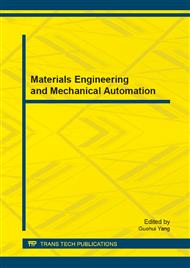p.472
p.476
p.480
p.489
p.494
p.501
p.507
p.511
p.515
A Method for Real-Time Medaka (Oryzias latipes) Detection Base on Machine Vision Technology
Abstract:
The Japanese medaka (Oryzias latipes) behavior monitoring system based on computer vision is very effective in the field of monitoring the safety of drinking water. But it is very difficult to detect the fishs body accurately and rapidly. In order to get the whole data of medaka in the real-time video sequence, a new approach to detect medaka is proposed in this paper which is based on 2D auto-threshold (OTSU), frame difference and background subtraction. With this method, the pixels in the image are divided into four parts: foreground, ghosting, foreground aperture and the others, then update background base on the data of the third part. At last, the whole fishs body can be got by some postprocessor. These methods are proved to be efficient to get the clean foreground and detect the fish in the real-time fish monitoring video.
Info:
Periodical:
Pages:
494-500
Citation:
Online since:
October 2013
Authors:
Keywords:
Price:
Сopyright:
© 2014 Trans Tech Publications Ltd. All Rights Reserved
Share:
Citation:


